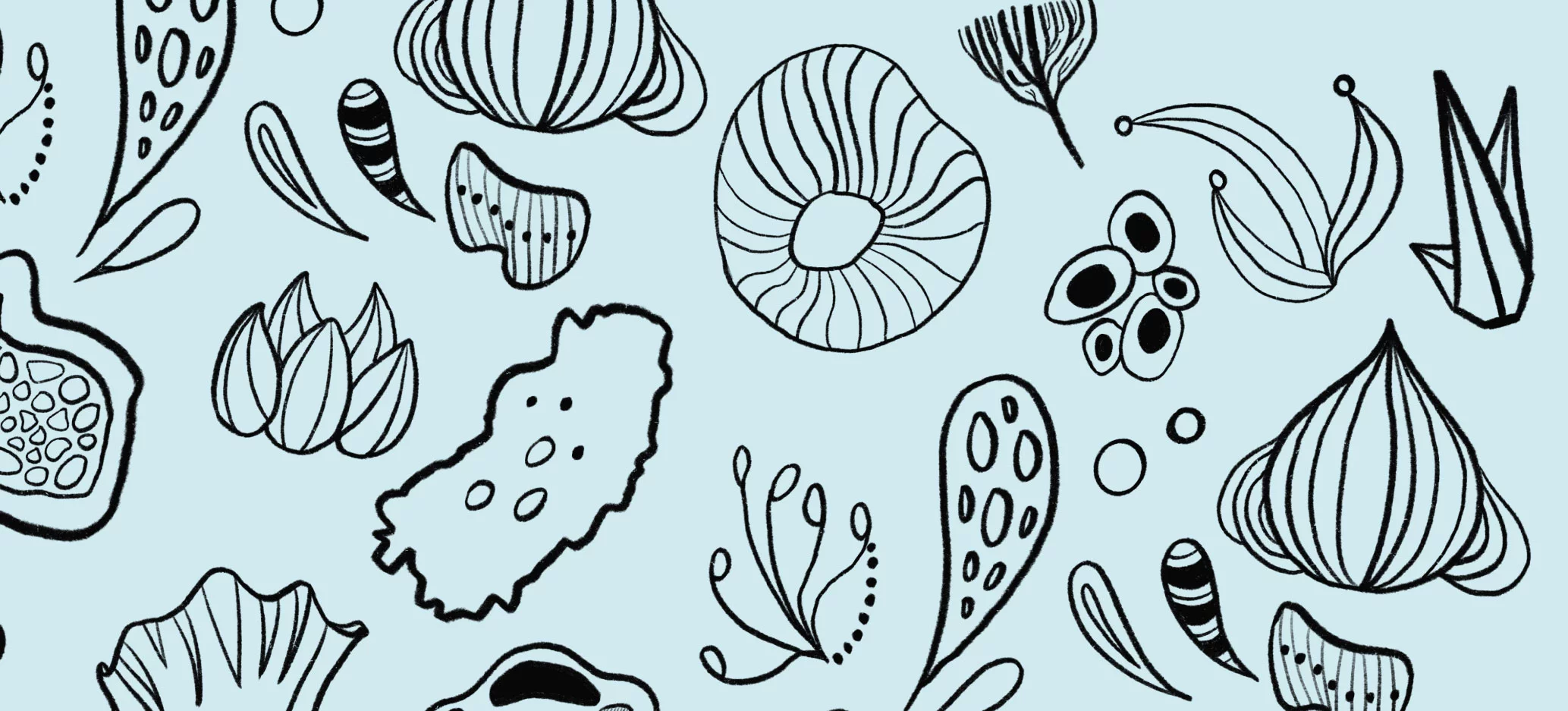Learning intention
- To recognise how artists use shape in drawing.
Success criteria
- I can recognise and draw simple shapes in objects.
- I can use shapes to form the basis of my own drawing.
- I can sketch my drawing first, before adding detail.
Cambridge Primary Art & Design (0067) Learning objectives
Experiencing
E.03 Gather and record experiences and visual information.
Making
M.01 Learn to use a range of media, materials, tools, technologies and processes with increasing skill, independence and confidence.
M.02 Select appropriate media, materials, tools, technologies and processes for a purpose.
Thinking and working artistically
TWA. 01 Generate, develop, create, innovate and communicate ideas by using and connecting the artistic processes of experiencing, making and reflecting.
Before the lesson
Check all images, videos, links and presentation slides are suitable for your class.
- Presentation: See like an artist.
- Presentation: Discussion.
- Flowers, plants or leaves.
- Visual journals.
- Drawing pencils.
Print in advance of the lesson.
Subject knowledge
In addition to the materials described in Teacher skills video: Drawing materials, teachers can also integrate tools such as pens, markers and fibre-tipped pens into the lessons in this unit. Learners are likely familiar with these materials, and they can encourage creativity and experimentation. Erasers are also important tools, not only for correcting mistakes but for exploring mark making by removing material from the page. Teachers may wish to have a range of these materials available for learners to try throughout these lessons.
Lesson organisation
Providing real-life objects for learners to draw gives them a richer drawing experience. Seeing and feeling objects in three-dimensional form will encourage them to use their sense of touch, which will support their drawing. Alternatively, printable visuals are available in the Activity: Plant images.
The ideas below are designed to further challenge learners or offer alternative approaches. These suggestions are flexible, allowing for deeper understanding, added variety or connections to other areas of learning.
Take the learning further
- Provide a mix of small objects (e.g. leaves, shells, pebbles, buttons, toy bricks). Ask learners to group them by shape (round, square, pointed, curved) and sketch one from each group. They could label each with the shape they noticed first.
- Ask learners to return to the same plant or photo from the Main event and sketch it again, but from a different angle or rotated position. This encourages fresh observation and reinforces the idea that shape and form change with viewpoint.
- Challenge learners to select one part of their plant or photo, for example, a single leaf, petal or stem, and draw it larger, filling the page. Ask learners if they notice new shapes, lines and textures they may have missed.
Language extension
For further challenge, learners could be encouraged to explore additional words linked to this topic: outline; contour; simplify.
Lesson plan
1: Recap and recall
Check learners can recall:
- Different types of line (wavy, straight, zigzag, thick, thin).
- How to draw different textures.
- How to sketch lightly.
- How shading can show tone (light and dark areas).
2: Attention grabber
Play the Learner video: See like an artist.
Learner video: See like an artist
Explain to learners that they will look for geometric shapes (regular shapes with straight lines and angles) in the classroom. Ask them to tell you what shapes they can see. Then, encourage the children to point out objects that have organic shapes (irregular natural shapes).
Hand out the Activity: Shape hunt and ask learners to work in pairs to look for objects made up of the shapes on the worksheet. Explain that when they see an object with that shape, they should sketch it in the box.
Ask:
- Can you see any objects which have more than one shape?
- Are there any shapes you can see which are not on the activity?
Take feedback.
3: Main event
1. Show slide 1 of the Presentation: See like an artist.
Presentation: See like an artist
Ask learners to discuss in pairs:
- How do you think the artist drew the picture?
- Can you see any shapes in the drawings?
2. Take feedback and repeat with slide 2.
3. Show slides 3 and 4. Describe how the artist used shapes to sketch each object. Note that artists look for shapes and then sketch these shapes lightly before adding details.
4. Ask the children to choose one plant, flower or leaf. Alternatively, hand out the Activity: Plant images for the children to choose one picture to look at.
5. Hand out learners’ visual journals and pencils. Allow learners to draw small sketches of their plants to fill one page of their visual journals. Remind them to focus on the shapes they see first. Encourage learners to sketch lightly and use multiple attempts on the page. They could try drawing from different angles or distances.
Which part of your plant is easiest to draw? Why?
Can you find any hidden shapes within the leaves or petals?
Take feedback.
6. After learners have had the chance to make several sketches, tell them to add details to their drawings.
4: Wrapping up
Show the Presentation: Discussion with sentence starters. Ask learners to share their sketches and encourage them to complete the sentences to explain their work.
Presentation: Discussion
Extended-mode explainer videos
How to extend your display to view the lesson page and preseantion mode simultaneously. Choose your operating system below to watch the video
If you need further support with extending your display,
please contact [email protected].
Differentiation
Learners needing support:
- Could outline the basic shapes over the top of the pictures on the Activity: Plant images.
- Should have slide 4 of the Presentation: See like an artist displayed on the board to guide them.
- Could use the Activity: Sketching for shape templates.
- May choose from a limited number of items with fewer shapes, such as a leaf or simple flower.
Learners working at a stretch:
- Could choose complex objects.
- Should use shading to add tone.
Assessing progress and understanding
Learners with secure understanding can:
- Show good knowledge of shapes by recognising them in objects and drawing them accurately.
- Recognise the differences between organic and geometric shapes.
- Use simple shapes as a basis for drawing objects (while not necessarily considering the size and scale of the objects in relation to each other).
Learners working at a stretch can:
- Draw shapes with minimal support; noticing that not all objects are geometric shapes.
- Identify basic shapes within organic shapes.
Vocabulary definitions
-
artist
A person who creates pictures, paintings, sculptures or other types of art to share ideas and feelings.
-
geometric shape
A regular shape with straight lines and angles.
-
line
A mark that can be long or short, thin or thick, and can help make shapes.
-
organic shape
Irregular natural shapes.
-
shape
The outline of an object.
-
sketch
A simple, quickly-made drawing that does not have many details.
In this unit
Lesson 1: See like an artist
Lesson 2: Shading
Lesson 3: Take a closer look
Lesson 4: Imagination in bloom
Lesson 5: Paper to pixels





